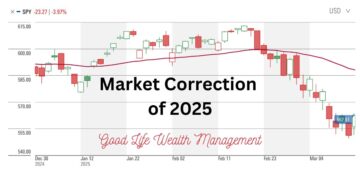We’re half way through 2015. How are the markets are doing and what does this mean to investors? Here’s a report card and our thoughts on the second half of the year.
US Stocks have had a stubbornly stable year, staying in a very narrow band of just a couple of percent above and below where we started the year. The S&P 500 Index was up 1.23% as of June 30. Although the US economic recovery is stronger and further along than the rest of the world, this was already reflected in US stock prices on January 1. So even with significant issues facing Europe, including high unemployment in several countries and the continuing Greek debt debacle, foreign stocks have outperformed US stocks so far in 2015. We have more weight in US stocks in our portfolios, which means that our home bias has held back our performance slightly compared to the market-cap weighting of our benchmark, the MSCI All-Country World Index.
Looking at stock styles, small cap was ahead of large cap in both US and foreign stocks. Growth continued to outperform Value globally. Emerging markets rallied from a lackluster 2014, performing slightly better than US large cap. The higher performance of foreign stocks over US stocks was in spite of the headwinds of the US currency’s strength in 2015. If we look at foreign stocks in their local currencies, their performance was even higher than in dollar terms.
The US aggregate bond index was down 0.1% in the first half of the year, with treasury bond yields finally starting to rise. Our bond funds have fared slightly better than AGG so far this year, with most posting small but positive returns. Unfortunately, we remain at an uncomfortable point in time where both stocks and bonds seem to carry above average valuations and risks. While I believe forecasting should be left to weathermen, returns over the next couple of years will likely be lower than those over the previous five years.
Volatility has been muted this year, but we can’t assume that will continue indefinitely. There are concerns about the Federal Reserve raising interest rates, or a bond default in Greece or Puerto Rico, but these are known problems that have been ongoing for more than a year. What I fear could be more likely to roil the market would be some unknown event which no one is expecting or predicting.
The top performing holding in our portfolios was SCZ, the iShares EAFE Small Cap ETF, which was up 10.49% through June 30. The worst performer was VNQ, the Vanguard REIT Index, which was down 6.30% over the same period. Interestingly, these two positions were also the best and worst performing funds in 2014, but reversed. Last year, VNQ was up more than 30% while SCZ was down 6%. If you looked at the numbers after December 31, you probably would have liked VNQ and bought more of it, and disliked SCZ, and sold it. Both of those decisions would have been losing trades for the first half of 2015. And that’s the problem with trading based on performance – you’re buying yesterday’s winners and not tomorrow’s. It is usually better to not chase performance, stick with a diversified portfolio, and rebalance to a set allocation when positions move away from their target weighting.
We take a disciplined approach to portfolio construction, but accept that we have no control over what the market is going to do. The factors which we can control include: having a diversified allocation, minimizing costs and taxes, and most importantly, managing our behavior by making good decisions. While the first half of 2015 has been a sleeper, we should be mentally prepared for the market to throw a few surprises at us in the second half of the year. If or when this occurs, it will be important to hold course or better yet, invest new money and dollar cost average. No matter what happens, you can always call me and I promise to be available to talk or meet with you to review your individual situation and make sure we remain on track to meet your goals.







